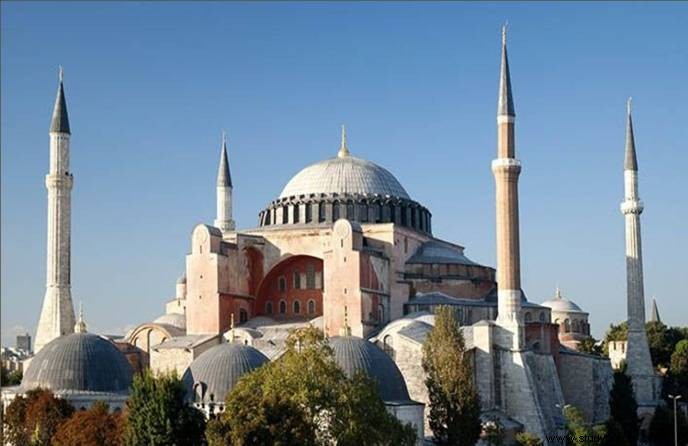
We had to leave the history of the Eastern Roman Empire in the middle, but here we have to discuss it again. The Eastern Roman Empire was running from AD 395 and until AD 480, it was appointing the kings of the Western Roman Empire.
From AD 480 to AD 565, the Frank kings of Rome considered the rulers of the Eastern Roman Empire as their masters, but this was only a theoretical demonstration, in practice, the rulers of Rome were completely independent of Constantinople during this period. The reason for this theoretical demonstration was that the rulers of Rome from AD 480 to 565 were from a foreign clan called the Franks.
They were not considered foreigners in Rome, so they recognized the kings of Constantinople as their masters. Even after the Eastern Roman Empire became powerful, Rome remained more important than Constantinople, so the credit goes to the Catholic Church of Rome and the Pope.
Rome and the Pope were more revered and important to Christendom, especially Catholic Christianity, than the Eastern Roman Empire. Nevertheless, the Eastern Roman Empire, containing all the good and bad, strengths and weaknesses, continued till AD 1453, but in AD 1453 the dark clouds of destruction started hovering over Kustunnia.
The apostle's turban is better than the Pope's crown
In AD 1453, the Osmania Turks (Ottoman Turks) besieged the capital of the Eastern Roman Empire, Kustuntia. At that time the people of Constantinople were so angry with the Pope that when the Muslims besieged the Constantinople, some of the feudatories of Constantinople suggested getting help from the Pope of Rome. At this an influential Byzantine Christian noble publicly made a statement that 'The Messenger's turban is better than the Pope's crown.
Due to this mentality, Kustuntiya did not particularly oppose the Muslims and handed himself over to them. Constantine (Eleventh) was the last ruler of this empire. He was executed by the Muslim Sultan of the Ottoman Sultanate on 29 May 1453. From AD 326 to AD 1453, 194 emperors and 6 empresses ruled the Eastern Roman Empire or the Byzantine Empire. Counting of co-emperors and junior co-emperors is not included in this list.
The title of Caesar was taken away by Muslim Sultans
The Ottoman Turks called Qustuntunia as Istanbul. He built 'Sancta Sophia' by Emperor Justinian in the 6th century. 'Aaya Sufia' to the beautiful cathedral of converted into a mosque called and looted the entire estate of the church.
Sultan Mohammed (II) declared himself the head of the Christian Union and a subsequent Sultan who was 'Glorious Suleiman' known as Caesar, declared himself Caesar. After the Muslim rulers assumed the title of Caesar, the conceit of the European race being invincible was shattered.
Fall of Mistras and Trebizond
The kingdoms of the Greeks (Greek governors) continued for a few more years in parts of the Eastern Roman Empire, even after the Turks took control of Constantinople. Finally the kingdom named Misras ended in AD 1460 and the kingdom called Trebizond in AD 1461.
Danger clouds over Rome
After the capture of Kustuntuniya, new hopes began to be born in the minds of the Osmania Turks. From here the road to Europe was opened. The Osmania Turks started moving towards Europe through this route. They conquered Germany and Hungary, and now they looked forward to Rome and Vienna.
After the Hungarian victory, their access to the borders of Italy and the walls of Vienna became easier, but Vienna was at the peak of its power in those days. So Vienna served as a shield for Rome. Yet as long as the Turks were in Europe, the clouds of danger could not be removed from the sky of Rome.
Jannisar Muslim
The Turks found a strange method of Islamization of the people of Kustuntiya. They did not collect taxes from Christians and took their little boys in return. These boys were raised like military nobles and given Islamic education. These boys were called Jannisar. 'Jannisar' in the Kustuntuniya region within a few years became an army.
Thus came into existence a group of Muslims of European origin. His blood was Roman but education was Islamic. The lifestyle was noble but the job was to fight. He was born from the womb of a Christian mother but his goal was to annihilate Christianity.
These knowledgeable Muslims did a great service to Islam and even wiped out the name of Christianity from Kustuntuniya. Many countries of Europe vented their power against the Turks, but still they could not take control of Kustuntunia for the next 455 years.
The end of the glory of Kustuntunia
The Turks could be pushed out of Europe only after the First World War (E.1914-19). Even Kustuntunia was recaptured by Europe. After that the Muslim Sultan of Kustuntiya became a puppet in the hands of the British but this situation did not last long.
A few years later, Turkish leader Kamal Pasha drove the British from Kustuntuniya. He established a republic in Turkey, and thus the hundreds of years old capital of the Eastern Roman Empire became the capital of a new Muslim republic.
The Turkish rulers soon moved their capital to Angora or Ankara, and Kustuntia remained a neglected and ordinary city. It had lost the distinction of being the capital of the great Eastern Roman Empire, and was no longer the capital of a small kingdom.
